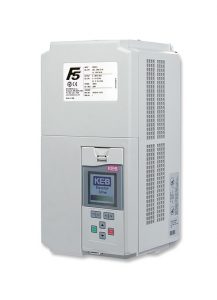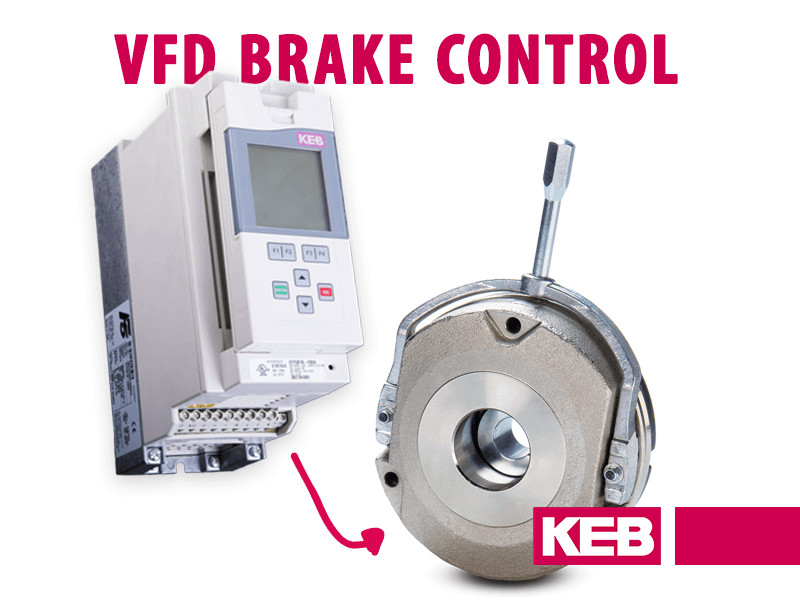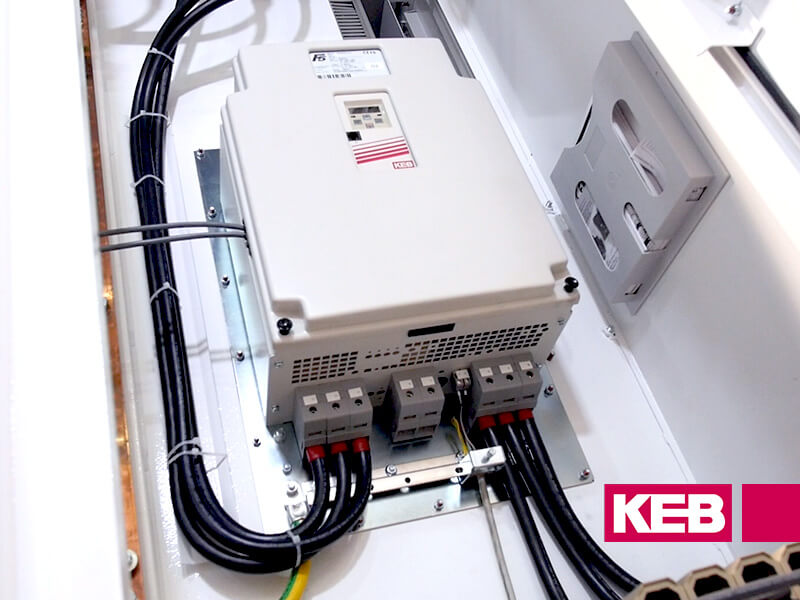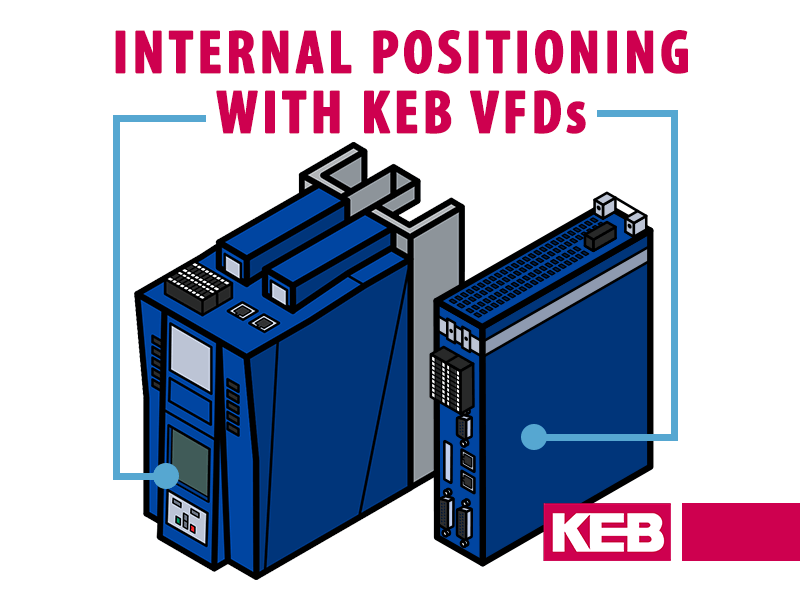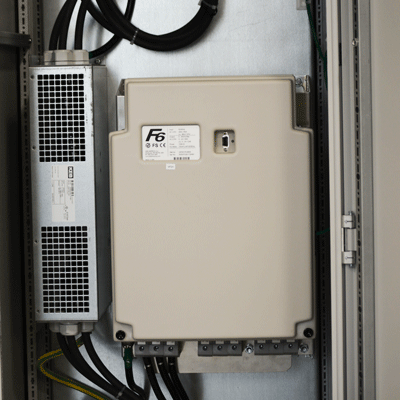UPS Function: Reduced Input Voltage for VFDs
Another interesting function built into KEB drives such as the F5, is our UPS Function. In short, the UPS Function allows the VFD to operate with a lower input voltage than would typically be used in normal operation. This function is often used in emergency modes where a machine designer wants to operate the VFD with a battery or Uninterruptable Power Supply (UPS).
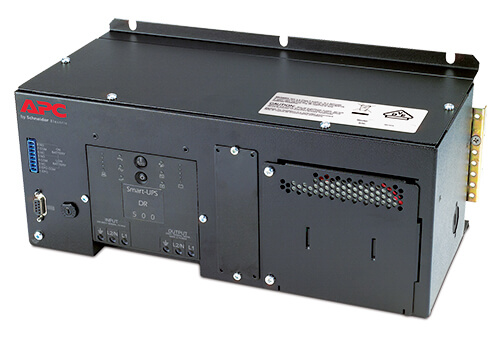
This post describes the basics of KEB’s UPS Drive Function and where it might be used.
Drive Protection Parameters
All commercial drives are going to have some sort of protection parameters that are used to protect the system. Some protection parameters like the motor temp sensor or motor overload counter are intended to protect non-VFD components like a motor.
Drives also have some protection parameters that are intended to protect the VFD. Protection parameters typically function as either warnings or faults. Warnings are used to alert a user or controller that some protection value is approaching a trip or fault level. When a warning is tripped, the machine will typically run at a lower speed or duty until the warning clears to an acceptable level.
The protection parameter values used in warnings will usually be adjustable to give an engineer maximum flexibility. Example warning parameters might relate to motor temperature, drive heat sink temperature, or motor overload counters.
Protection parameters typically function as either warnings or faults.
Undervoltage and Overvoltage Levels
Some hard-coded protection parameters cannot be adjusted by a user. Exceeding these values will result in a drive fault and a machine shutdown. These values represent the extreme operating points and exceeding these values could result in catastrophic failure of the VFD. Examples of hard-coded protection parameters include current overloads, phase imbalance detection, maximum heat sink temperatures, and undervoltage and overvoltage levels.
As it relates to the UPS Function, let’s take a look at the underpotential level of the KEB F5 480V drive. As a quick reminder, the drive’s DC bus level will be:

The KEB F5 480V drives use the following values as thresholds before the drive will fault with over/under voltage faults:
| Mode of Operation | E.UP Level | E.OP Level |
|---|---|---|
| Normal | 240 V | 800 V |
| UPS Function | 200 V | 800 V |
Applying too much voltage can damage components. Applying too little voltage doesn’t in itself damage components but likely indicates that there is a problem with the drive’s incoming power supply like a brownout or phase loss which could be problematic. Also, with the reduced input voltage, the motor performance would likely be affected as the motor torque and speed would suffer, possibly resulting in loss of control.
Emergency Mode
Many machines or installations must plan for the event that there is a loss of power. What will happen if my building loses power? Will the machine safely come to a stop or will it crash to the floor? Will anyone get hurt as a result?
A common desire for machine builders in the event of loss of power, is to bring the machine to a known position/state in a controlled manner. Once in the safe position, the machine is shut down until the incoming power is restored or fixed.
Machine builders can often times plan for a loss of power event by using a short-term power supply like a battery pack or UPS.
These supplies are not intended to run the VFD for long periods of time. Rather, they are meant to temporarily control the motor and bring the machine to a safe place where it is shut down.
The problem is that many drives have this underpotential level hard-coded into the drive because it is a critical protection parameter. This gives an engineer little flexibility unless they use a temporary power supply with a relatively large DC bus and 3 phase output.
KEB’s UPS Function
KEB’s 400V class drives have a feature called the UPS Function that reduces the E.UP (Error UnderPotential) level. One of the drive’s digital inputs is programmed with the UPS function. When the digital input is activated, the KEB drive: resets an E.UP fault, allows for a single-phase connection (UPS) and lowers the E.UP level to around 180VDC
| Mode of Operation | E.UP Level | E.OP Level |
|---|---|---|
| UPS Function | 216 V | 800 V |
Additionally, with the flexible programming of KEB drives, separate speed and torque limits can be programmed that will help to make sure the DC bus voltage does not sag and trip an undervoltage fault.
Do you use UPS or batteries with your VFDs? I’d be interested to hear if you use this function or would find it useful.
Let's Work Together
Connect with us today to learn more about our industrial automation solutions—and how to commission them for your application.
